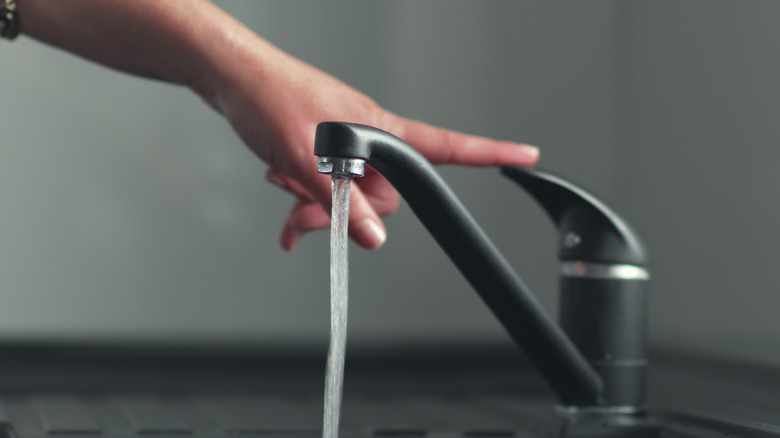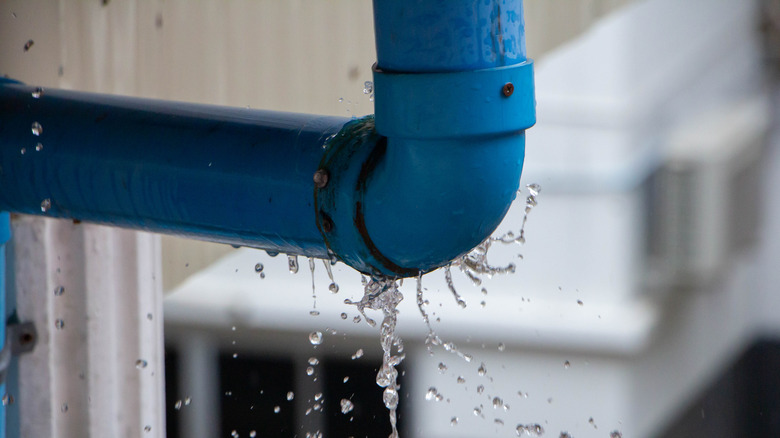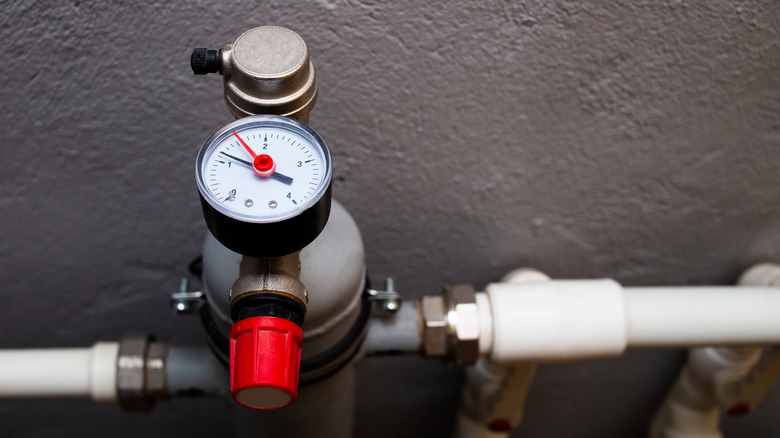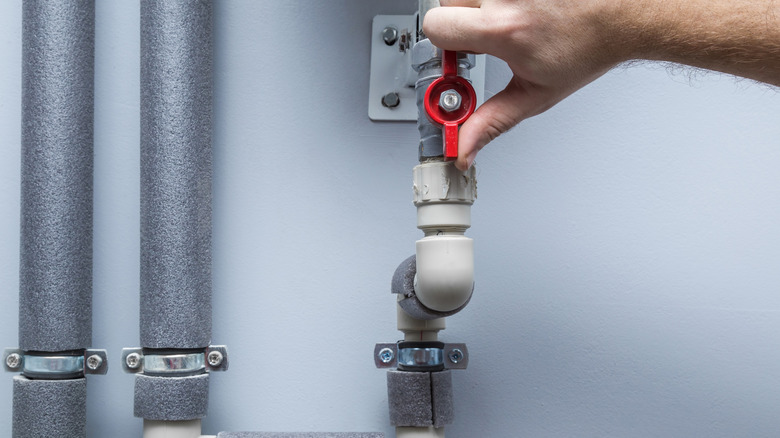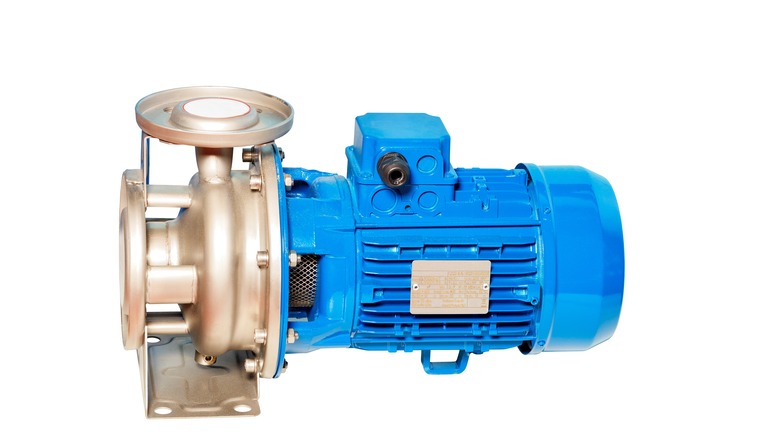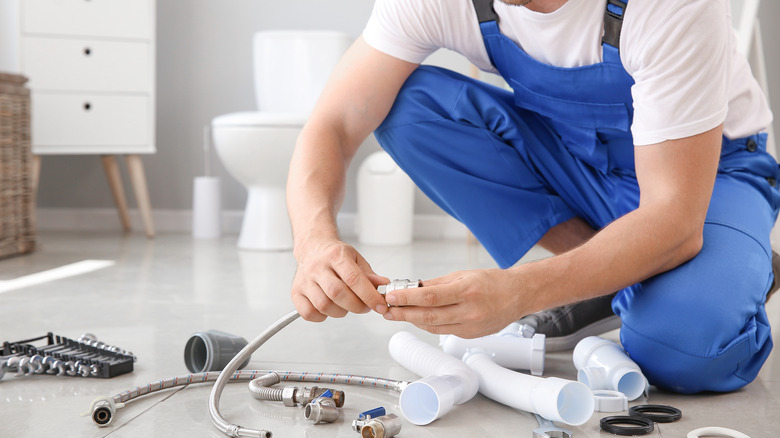The Best Tips To Boost The Water Pressure In Your Home
An iconic African singer wrote in one of his songs that water has no enemy. Looks odd, but if you think about it, he was 100% right. Water is a necessity. Every second, one person or another is either taking a cool bath, watering the garden, feeding the pets, getting hydrated, or washing something. Regardless of the number of taps running simultaneously in your home, your water flow shouldn't slow down. If it does, there's a problem.
If, for any reason, you've experienced a less than average water flow, your first thought might be to check the water levels in your storage system. However, more often than not, that isn't the case. Our diagnosis, as backed up by the experts at Cardinal Plumbing + Heating + Air, is that your water pressure has a couple of glitches. According to Hiller, low water pressure could be a result of multiple reasons, including clogged pipes. Where you cannot seem to get a professional to take a look, you can attempt to boost the water pressure in your home in just five easy steps.
1. Check for leaks
If you're dealing with low water pressure, the very first thing you want to check out is your pipes. Burst or leaky pipes could hamper water circulation, causing little to no water flow. Now, since 30% of your water usage is in the toilet, Benjamin Franklin, says that your first stop should be there.
According to Kingscote Chemicals, the easiest way to spot a leak in the toilet is by adding some or one of those colored toilet cleaners. Leave for approximately ten minutes, and then check for a puddle of colored water. If X marks the spot, you've found your leak. If not, move on to the kitchen. Turn off all the taps, and using a cloth, dry up all the sinks and pipes with an old cloth. Mop the floors too. What you're essentially trying to do is to ensure everywhere is dry enough for you to notice an abnormal drip or puddle that you wouldn't otherwise notice if they were on.
2. Check the water pressure
The experts at Fast Plumbers write that the normal water pressure should read between 40 PSI to 60 PSI. While we agree that you "trust your gut," in instances like this, we'll take a switch and ask you to run tests. To gauge the water pressure in your home, purchase a water gauge (which comes at $18 to $30) and fix it into your garden hose faucet. Open up the water valves and hose faucet and take a read. If it's less than 40 psi, then your water pressure is low (via Wonkee Donkee Tools).
If your water flow typically comes from a well, limescale, dirt, and debris can clog up your good pump, blocking the flow of water into the home. To unclog the pipes, run a little ol' trick by pouring about 1 to 2 gallons of vinegar into the pipes (per Flo by Moen). This would melt the congealed dirt in the pipes and maintain a normal convenient flow. Where that isn't the case, the experts at Skillings & Sons recommend calling a professional to check out your pump.
3. Open your main water valve
Another common cause of low water pressure is a half-open or half-closed water valve (depending on your philosophy). It is quite common to open the water valve only partially after maintenance, an honest mistake. However, over time it could cause a major problem by lessening or completely hampering water flow (via Popular Mechanics). To fix it, simply locate the water valve and turn it clockwise till it's completely opened.
On the other hand, if your water valve is jammed or simply blocked by debris or lead, you have to replace it. In three steps, identify the valve, make a purchase and call up a professional to install it. According to Angi, this costs only $375 to $600. If this doesn't work, then try asking your neighbors if they have faced similar problems. If it's a general problem, House Method recommends calling for help from local water authorities immediately.
4. Fix a water pressure booster
If your house is located far from the municipal control or on a hill, you'll often experience a lot of water pressure problems. At least, that's what Mr. Plumber says. And this is a gravity issue. While there is little to no solution to replacing the location of your home, you can boost the pressure of your home by installing a water pressure booster. A booster pump is a tool that helps increase the pressure of water from the source to the ends (per Fresh Water Systems). Fortunately, this doesn't cost a fortune, and you can get one within the range of $200 to $400.
Once you've bought the booster pump, you can decide to hire a plumber or fix it yourself using some simple steps. Before this, ensure you get a good location for the pump and work with the right measurements. Also, ensure it's fixed in line with the Water Regulations Advisory Scheme to avoid penalties from the law, says Real Homes. With your booster pump fixed, you'll enjoy a faster flow of water into your bathrooms, kitchens, and toilets.
5. Call a professional plumber
The last solution we'd proffer for boosting the water supply of your home is to call a professional. Even though you want to fix the issues yourself, we advise you to work with a professional if all the tips above have proved futile. Simply put, the plumber has all the expertise to decipher the exact problem with the water pressure. Hiring one would cost you between $45 to $200, writes the experts at Mr. Rooter Plumbing. One of the numerous benefits of working with a professional plumber is the opportunity to fix all issues at a go. If several problems are causing the low water pressure, your plumber will repair them without any faults in the nearest future, says Order A Plumber.
However, ensure it's a trustworthy company with seasoned experts to handle the job. As you're planning to repair the problem, working with the wrong professional may aggravate the issue, leading to more expenses, says Sunshine Plumbing & Gas. So, ensure you cross all the Ts before selecting the one to handle the job. Unsure, you could always check out our caveat on the biggest scams to watch out for in a plumber.
